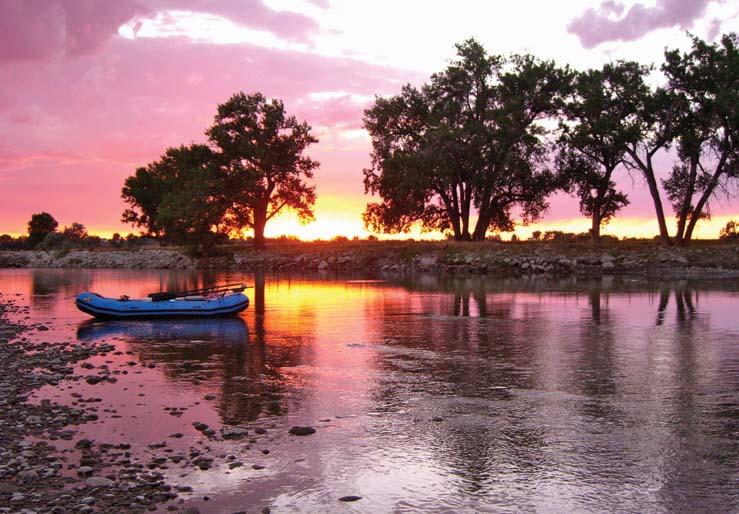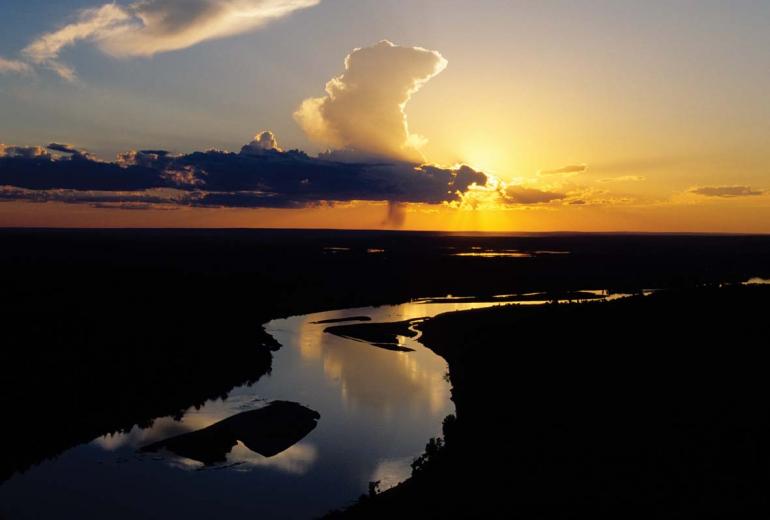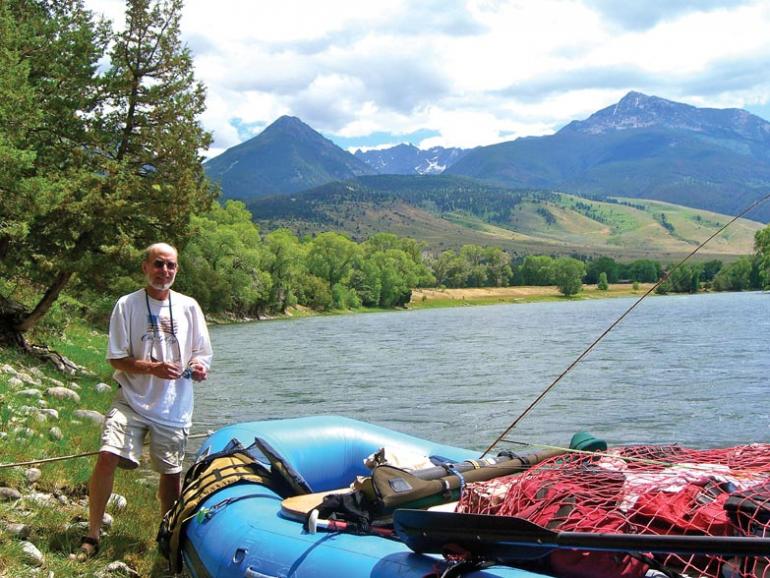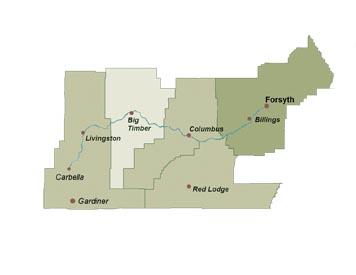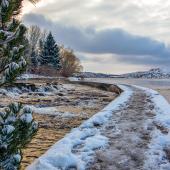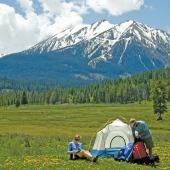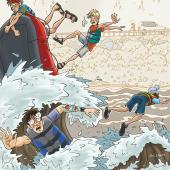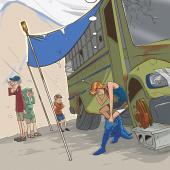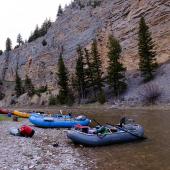Long on the Water
A journey on the old Yellowstone River.
A float trip down the Yellowstone River had been tumbling through my mind for eight or ten years. Finally, in 2009 when I had just about given up on the possibility, the perfect group came together. Each of us was over 60 and in semi-retirement, and we all had three weeks off to camp, fish, and float one of America's longest and most beautiful rivers.
These fellows were men that met certain qualifications. I knew we would “have each other’s backs” if the going got rough. Each had spent considerable time camping and outdoors, and each was long on experience with boats and western rivers. Equally important, each was an avid trout fisherman.
We had only 12 months to plan this 400–500 mile journey, and it seemed like I was under the gun to get all the questions answered. One of my float partners was my brother Jim, a Californian who owns a cabin with me on the Gallatin. We searched far and wide for the perfect 16’ x 7’ raft we would need and finally found a good boat at a rental shop in Livingston.
The rest of the planning took place in the winter, mostly on my computer, but the excitement built even as snow fell outside. Satellite navigation, BLM maps, and several books helped us get the feel for this big freestone river. Paradise Valley is the most famous section of the river; very few (in their right mind) have floated the whole Yellowstone in one long float, and all the accounts we read were about taking 3–4 day segments in the summer and fall. Was there some reason we shouldn’t attempt a three-week float that included Gardiner, or Miles City, or even the confluence with the Missouri?
I decided to shoot for the moon, or at least most of the navigable Yellowstone. By spring, the equipment list had prompted several purchases of heavy rope, better air mattresses, and three folding chairs (remember, these three sets of bones were over 60 years old). We set the shove-off date for July 20 (to be sure of clear water for fishing) at Carbella, just 17 miles outside the Park. We left the destination vague but hoped to make it at least to Miles City, which would require 17 miles per day.
As July 20 approached, I was in touch several times a week with the third member of our raft crew. Larry was a lifelong friend from Maine who backpacked many times with me in the Gallatin Range in our early years. We rechecked last-minute equipment details and travel schedules; there was also day-to-day monitoring of a health problem with Larry’s wife.
Four days before our trip, Larry had to drop out. My brother and I had some quick decisions to make, because we had just lost the only member of our crew with rafting experience. We decided to shorten our planned distance to about 300 miles, which put us to Forsyth, Montana.
Rallying our spirits—with Larry’s encouragement—we began the last-minute organizing. Food was easier thanks to my wife preparing a week of homemade dried meals, all bagged up and ready to go. Three days were filled with preparation, during which we never wet a line (an unheard of situation for Jim and me).
On a sunny Tuesday, we shoved off. Fortunately, the first two days below Carbella are relatively flat water, and we enjoyed a crash course in how to ferry our large raft from one bank to the other. We caught foot-long trout in this stretch and enjoyed several delicious fish dinners. Below Mallard’s Rest, the water becomes more challenging with one- to four-foot roller waves and occasional serious rapids. Even the usual current produced some excited moments due to our relatively novice raft experience and the size of our craft. Stopping often and wading became a necessity.
The 14 miles from Mallard's Rest to Livingston was a great combination of big trout and white-knuckle boating. We caught 14- to 18-inch rainbows and browns while shedding off adrenaline from the rapids. Sadly, the bigger trout eluded us, as did the cutthroats—but you couldn't imagine two happier fishermen on an epic journey. We got used to handling the raft while soaking in some of the most beautiful mountain scenery and sunsets you can see anywhere.
The wildlife viewing was nothing short of amazing. Canada geese, pelicans, and eagles were ever-present. Beavers were surprisingly common near our campsites, and mule deer often walked by or even into our camps at dusk or dawn.
We floated the river in three segments. The first was 100 miles of clear mountain river too cold to take more than a three-minute bath, with mountain ranges in sight nearly all the time. Downstream of Big Timber, the river widens and calms down but begins braiding, so our rowing challenge turned into a navigation challenge. Good maps are a must in this stretch, and yet trusting the maps completely ignores the Yellowstone's ability to change from season to season and year to year. Shallow and dead-end channels replace standing waves and sweeps as your nemesis. We caught good trout all the way to Laurel. Guides don’t work this stretch much, so we often had the river to ourselves.
The second leg through the Billings area was merely water to get through. But once we were downstream of the city and the Huntley diversion dam, the float was quiet. Even though it was the first week in August, some days we saw only one or two boaters. Rimrock and bluffs provided a constant panorama. Whatever stress we had left in us eased away as the Yellowstone headed out across the prairie.
Sport fishing dwindled in the third leg of our float during the third week, though we caught some large catfish, dozens of goldeneye, and an occasional smallmouth bass. The scenery continued to drop our jaws in awe, and the solitude eased our souls as the river’s current slowed. Staying in the main channel became a goal in order to make our miles for the day. In contrast to the quiet days, storms revved up at about seven o’clock, sending us into our tent with dinner in hand.
We slid by the Highway 12 bridge at noon on the 22nd day and pulled up to the boat ramp where we planned to deflate the raft. Overall, the trip was a complete success. There were feelings of quiet relief, looking forward to that first hot shower and a warm bed, mixed with celebration for bringing ourselves 300 miles downstream with only the Yellowstone’s current and our wits to see us through.


